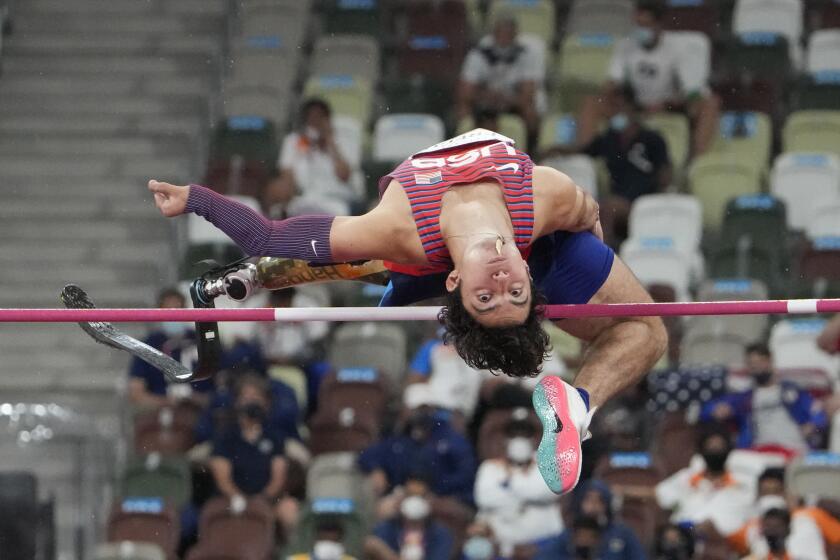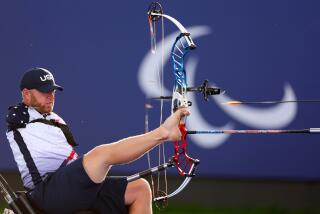
At age 10, Jamal Hill discovered he had Charcot-Marie-Tooth, a hereditary motor and sensory disease. His organization, the Swim Up Hill Foundation, hopes to reach kids ages 6 and up in underserved communities to learn how to swim.
- Share via
From Southern California to northeast Ohio, many watched Jamal Hill swim, but few actually saw him.
Hill is 6 feet 4 with a toothy grin, a lean torso and long, thin arms and legs ideal for propelling him through water as a world-class freestyler. When Hill walked in a room or pulled away from competitors in the pool, no one saw anything amiss. He wanted it that way. For more than 10 years, no one outside of a select group of family members knew his secret.
Then one day in 2018, his coach, Wilma Wong, noticed how the Olympic hopeful used his arms to drag his legs out of the pool. He looked like her clients with cerebral palsy.
Was there something he wasn’t telling her, Wong asked him.
“I felt seen in that moment,” Hill said.
Hill smiled wide and revealed to his coach of one year that he was born with Charcot-Marie-Tooth disease, a group of inherited disorders that cause nerve damage. While growing up in Inglewood, Hill hid his CMT from everyone, learning how to walk without giving off any sign despite feeling as if he were balancing on two peg legs. CMT often affects the peripheral limbs and can result in smaller, weaker muscles, loss of sensation and muscle contractions.
He spent 13 years fearing he would be judged and limited by his disability, but in time, Hill started to see it as part of his strength, finally allowing him to soar to his sport’s biggest stage. The 26-year-old won a bronze medal in the 50-meter freestyle at the Tokyo Paralympics in August, setting an American record at 25.19 seconds.
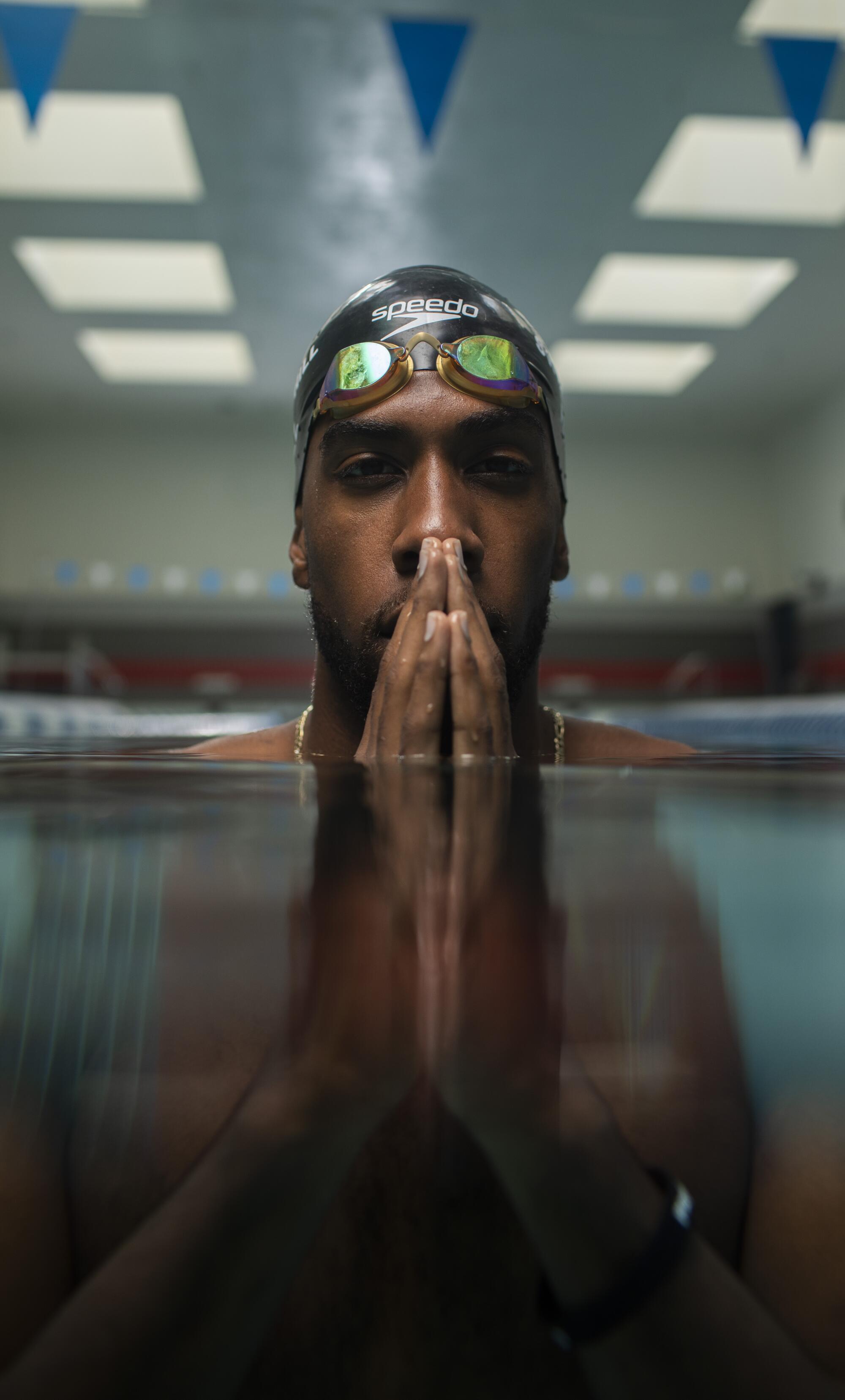
Three years before he stood on the podium, Hill had wanted nothing to do with the Paralympics. When Wong suggested switching his focus from the Olympics, he shunned the idea.
“I felt offended,” Hill said. “I felt personally challenged. I felt in some ways disrespected.”
Immediately, Hill regretted revealing his disability and asked Wong to keep his secret as they continued training despite the sudden elephant in the pool. Wong believes in miracles but knew healing Hill’s CMT “would have been like raising someone from the dead.” There is no cure for the progressive disease.
For many years, Hill’s mother, Sandra Floyd-Hill, had not known she inherited the gene that causes CMT from her mother. When her older brother, who is three years her senior, started showing signs of CMT at age 21, Floyd-Hill thought it was because he had started drinking or partying and the hard lifestyle was causing him to walk with a unique gait. No one told her it was CMT. It just was not something the family talked about.
“I didn’t want to be different.... I didn’t want to believe there was anything wrong with me.”
— Swimmer Jamal Hill
It wasn’t until her son was 10 and became paralyzed from the neck down on Thanksgiving that she started learning the truth. Hill was hospitalized as doctors ran a series of tests on the previously healthy boy. Because the case was so complicated, the results were sent to hospitals across the country for review. A hospital in Baltimore determined Hill had CMT.
Only after Floyd-Hill shared her son’s diagnosis did family members finally reveal that CMT is what caused her brother to walk with an uneven, high-stepped gait.
Symptoms of CMT can vary from person to person, even within the same family. Hill can’t stimulate any muscles from his knees to the soles of his feet, but he can feel external stimuli like banging his shin on a table. It feels as if he’s walking on his knees. From his elbows to the tips of his fingers, his muscles fire at 30% capacity.
Ezra Frech, a 16-year-old native of L.A. who attends the Brentwood School, finishes eighth in the high jump in his Paralympic Games debut in Tokyo.
People with CMT who are still mobile are often drawn to low-impact exercises like swimming. But for Hill, the pool felt like his second home even before CMT took hold.
Hill started swimming at the Westchester YMCA as a 10-month-old in “mommy and me” classes. He was so enamored with the water that he joined the swim team at around 6 years old. He soon added other sports — football, baseball and basketball.
When Hill started experiencing severe shoulder dislocations soon after his 10th birthday, doctors cautioned against swimming, believing the injuries were the result of overtraining. So he stopped.
In reality, his shoulder popping out of joint was among the first symptoms of CMT. The connection became clear when Hill was diagnosed with the nerve disease nine months later. Knowing the cause of the injuries prompted more warnings from doctors.
No more sports, they said.
No chance, Floyd-Hill responded.
“I don’t believe that if you have something, you’re supposed to fall down and roll over,” she said.
But her son did fall down — in fact, hundreds of times as he adjusted to living with CMT, mangling his ankles so badly that he was on crutches for months at a time. But he got up each time. He smiles now while saying his ankles have “become Gumby at this point.”
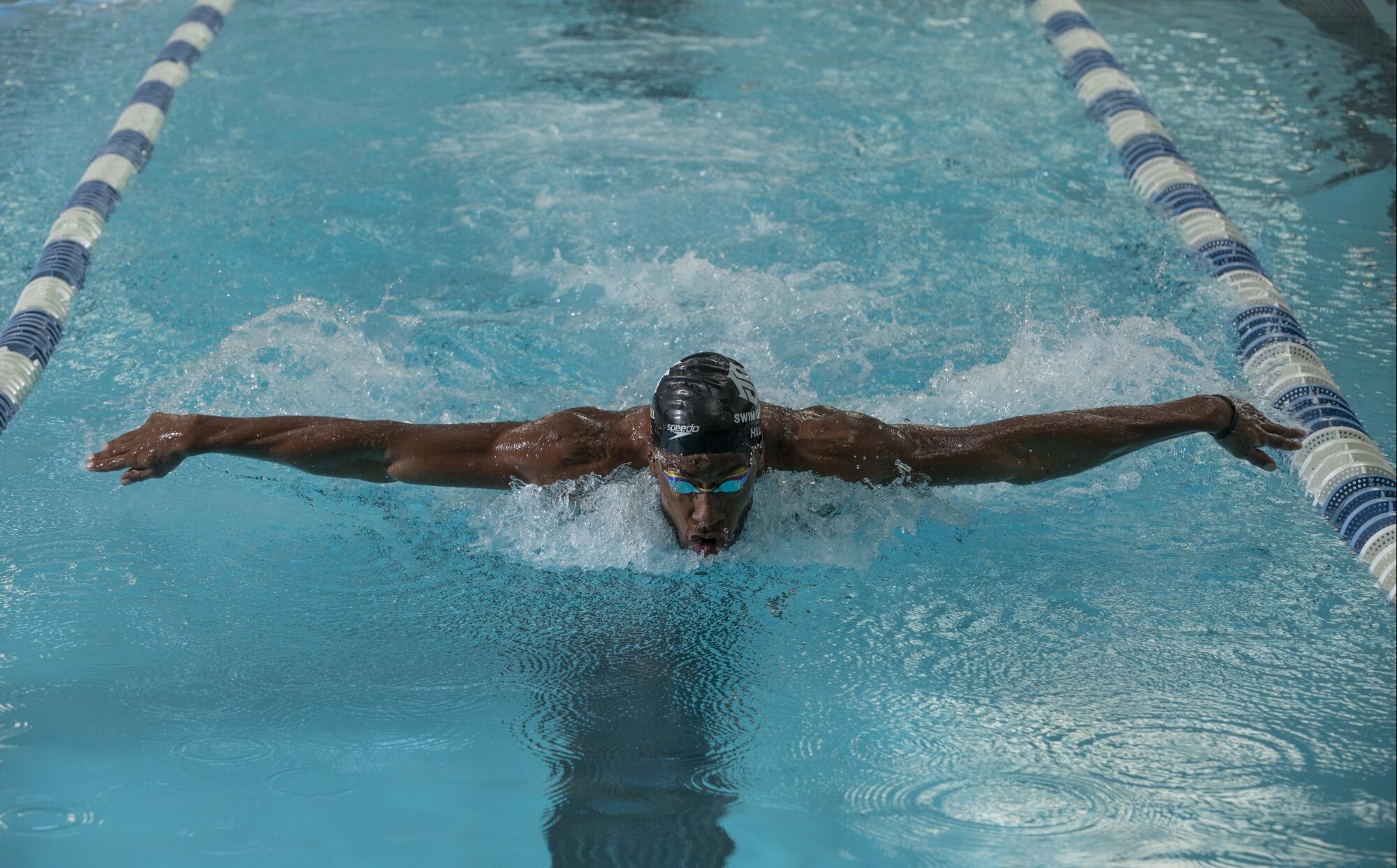
After six years of learning to manage his CMT, Hill returned to swimming as a sophomore at Serra High in Gardena. He earned a scholarship to Hiram College, a Division III school in Ohio, where he specialized in sprints. As a junior, he swam the opening leg of the team’s 200- and 400-yard freestyle relays and anchored the 400-yard medley relay.
Still, no one knew about his disability.
Coaches sometimes wondered why his upper body was so strong but his legs so skinny, or why his motion in the pool didn’t look quite right. Don’t worry, coach, I’ll work harder, Hill told them.
“There was a lot of stigma surrounding disability,” Hill said. “There was a lot of shame to that. I didn’t want to be different. ... I didn’t want to believe there was anything wrong with me.”
“All the lies that I’ve told myself and this person that I’ve built over the last 12 years has to stop here. Now I have to step into this new journey ultimately living in my truth.”
— Swimmer Jamal Hill
Hill left college after his junior year in 2016 to dedicate himself to swimming and building a career in the pool. Even when Wong suggested the Paralympics, he hoped the same mental strength that helped him get this far could get him to Tokyo as an Olympian.
It took another swimmer pointing out how he was beating Hill off the starting block by almost a meter for him to finally consider the Paralympics. Within six months, two people had seen him in ways that no one had for the last 13 years. There could be no more hiding.
Hill asked his mother what she would think if he became a Paralympian.
“You mean you’re going to go and be the best you can do at the something you love doing?” Floyd-Hill said.
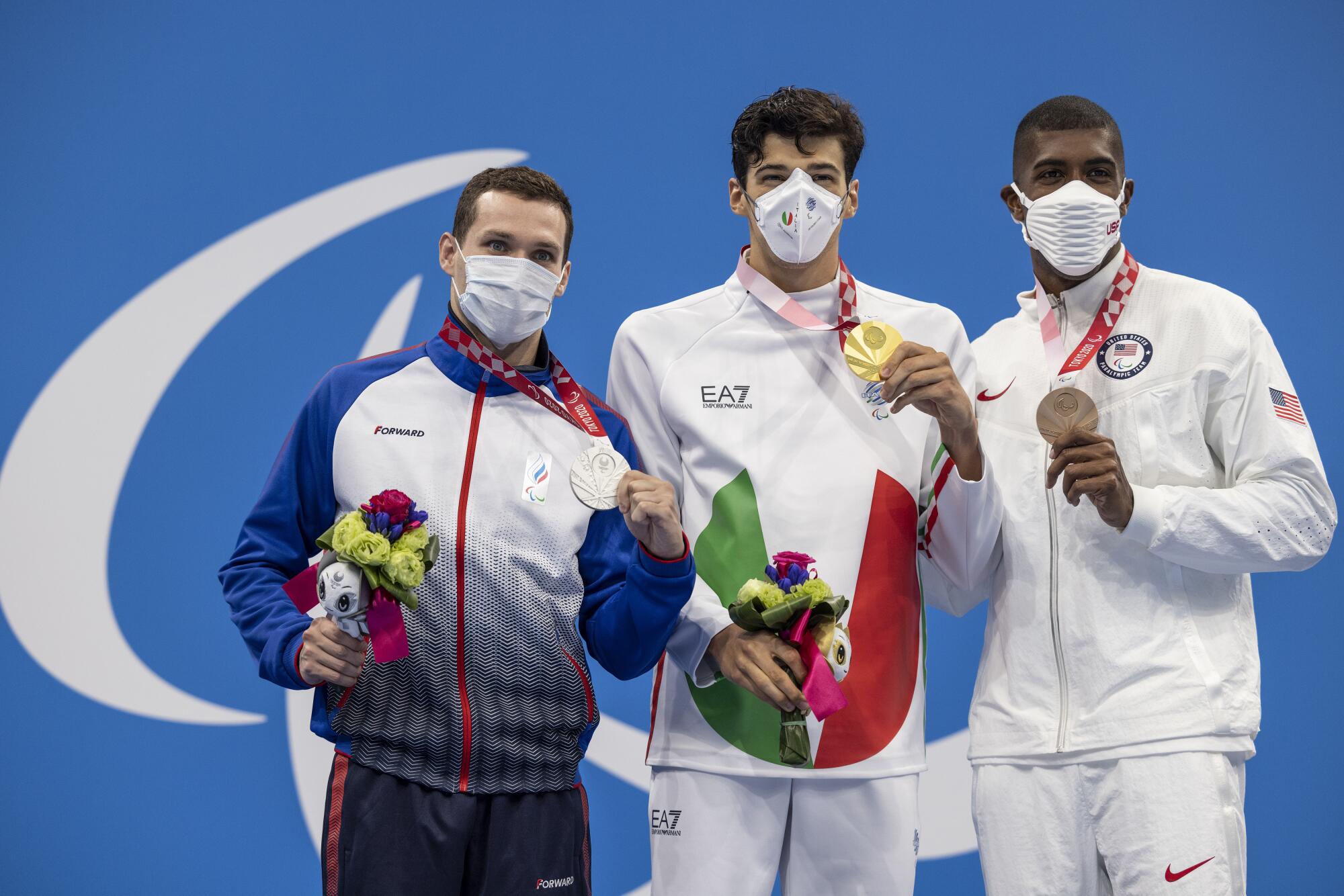
He asked whether she would be embarrassed.
“Absolutely not.”
Perhaps some of his trepidation was fear of the unknown, she said. The family didn’t know anything about the Paralympics. They had never seen an event. They thought it was for people who were in accidents or missing a limb. Hill didn’t believe he belonged among them.
Joining the Paralympic movement forced Hill to challenge his own perceptions of adaptive sports, in which a wide range of people compete under different classifications. There are 10 sport classes for athletes with physical impairments, with higher-numbered classes indicating less severe impairment.
My legs no longer worked well but my arms did. My doctor said there were two ways to get better: heal and adapt. She suggested I get a hand-bike.
Hill, already aware of how he stuck out on the pool deck as a Black man, didn’t want another reason to stick out. He went home and wondered what would happen if he chose the Paralympics. What if people thought he was cheating? What if people who knew him suddenly thought less of him? What if it was all in his head?
He sat down with his father, James Hill, to solve his “identity crisis.”
“All the lies that I’ve told myself and this person that I’ve built over the last 12 years has to stop here,” Hill said. “Now I have to step into this new journey ultimately living in my truth.”
Acknowledging his truth opened a new training world to Hill. He and Wong work together in short sessions to guard against overtraining that can put Hill’s body into an inflamed, paralytic state. They had access to the Pasadena Boys and Girls Club pool for only an hour a day leading up the Games. Hill swam for about 40 minutes a day.

Needing to revamp his dive, Hill and Wong worked with consultants from San Diego’s Weck Method, a company dedicated to finding innovative ways to push fitness forward. They designed a starting position that allowed Hill to overcome the lack of strength in his lower legs by having him begin with his right arm loaded behind him instead of grasping the starting block with both hands. When Hill dives into the water, he swings his arm forward to gain momentum.
The unique stance helped Hill become one of the Paralympic movement’s shining stars. He was featured in Speedo’s national “Make Waves” campaign leading up to the Tokyo Games, sharing the spotlight with Olympic stars such as Caeleb Dressel and Abbey Weitzeil on billboards across Los Angeles.
“I don’t have to hide in plain sight anymore,” Hill said. “Really accepting that of myself allowed me to really blossom and grow in this space.”
Trenten Merrill is looking forward to competing at the Tokyo Paralympics as he strives to offer a message of hope for amputees and disabled persons.
The joint marketing campaign was another symbol of the Paralympics’ growth. The Tokyo Games marked significant milestones in TV coverage, as the Paralympics were on NBC, and wages, allowing Team USA’s Olympic and Paralympic athletes to be paid the same amount for their medals.
Hill has major sponsorships with Airbnb and Speedo and founded a nonprofit, Swim Up Hill, which is aimed at teaching 1 million people to swim by 2028 using a unique technique designed to teach students in less than five hours. Actor Terry Crews is one of the success stories.
People are now truly seeing Hill, whether it’s in the pool — where he’s planning to swim in Paris in 2024 and L.A. in 2028 — or on the side of a building. On 10-foot-tall billboards, the proud Paralympian is hunched on the starting block in his signature one-armed stance, ready to dive into his future.
More to Read
Go beyond the scoreboard
Get the latest on L.A.'s teams in the daily Sports Report newsletter.
You may occasionally receive promotional content from the Los Angeles Times.

